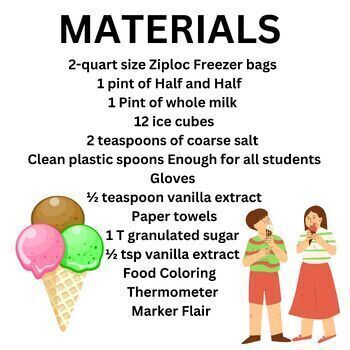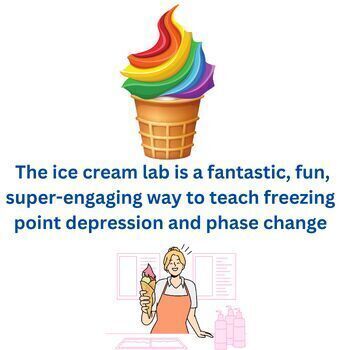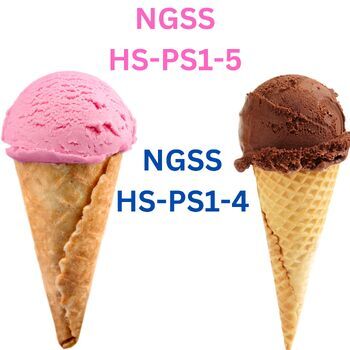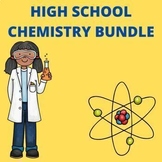Chemistry Ice cream labs freezer bags Colloids, Activation Energy High School
- Word Document File
Also included in
- Here is the bundle you have been looking for to change your chemistry class from one students have to take to one that they want to. Helping students understand chemistry That can be a tough task. The lessons have all been student tested for many years. The bundle includes labs, worksheets, stoichPrice $100.00Original Price $209.90Save $109.90
Description
The ice cream lab is a fantastic, fun, super-engaging way to teach freezing point depression and phase change
Your students about colloids and temperature by completing these fun labs. A FUN resource for end-of-school, camping, or when you are teaching colloids.
This product contains 2 labs one written for Middle and the second for High School science.
I hope your students will enjoy it as much as mine do every year.
MATERIALS
2-quart size Ziploc Freezer bags
1 pint of Half and Half
1 Pint of whole milk
12 ice cubes
2 teaspoons of coarse salt
Clean plastic spoons Enough for all students
Gloves
½ teaspoon vanilla extract
Paper towels
1 T granulated sugar
½ tsp vanilla extract
Food Coloring
Thermometer
Marker Flair
On purpose during this lab, I do not tell them what we are making. Food coloring turns milk a strange green-brown, the heavy cream an off shade of pink, and you dye sugar a blue-grey and mix in silver sugar crystals, or brown with specks of green and red. I also replace terms like milk and sugar with BS and/or pseudo-science names like dihydrous lactase and granulated polydisacharide. The surprise is at the end when they can eat it.






